Porsche 911 997 Buyers Guide 2006 – 2012
Practical Expert Advice to Help You Successfully
Buy a Porsche 911 997 2006 – 2012
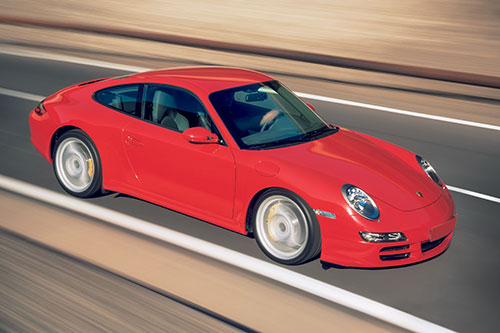 Taking the Leap – Purchasing a 911 997
Taking the Leap – Purchasing a 911 997
If you’re thinking about buying a Porsche 911 997 (2006–2012), you’ll likely read a few cautionary tales. The original 997 is now more than twenty years old and is a highly sort after Porsche owner experience. The 997 is generation two of the water-cooled 911 cars and delivers improved reliability and performance. Technical problems with the previous version (996) were generally resolved, however, there are still issues with the 997 version to be aware of.
Yes, You Should Buy a 997 911
We believe the Porsche 997 911 is an excellent Porsche sports car. While finding the right example is rarely straightforward, with a bit of luck, the right information, and some guidance, it’s possible to score a great deal. Aside from a few well-known issues, the 997 is a solid car and retains good value.
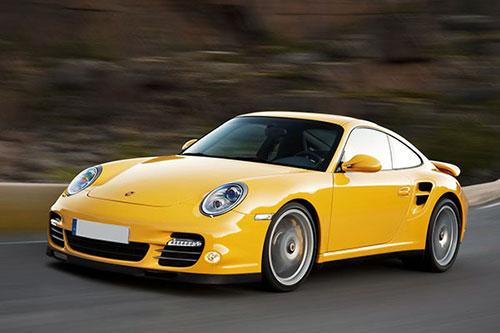 How This 997 Buying Guide Can Help
How This 997 Buying Guide Can Help
This guide will help you avoid costly mistakes and common pitfalls with the 997 911. We skip the fluff and focus on what truly matters – mechanical concerns, known issues, realistic ownership costs, ongoing maintenance, and expert tips to help you find a worthwhile car. Armed with the right knowledge, there are excellent examples of the 997 911 out there waiting to be enjoyed.
Know What You’re Getting Into
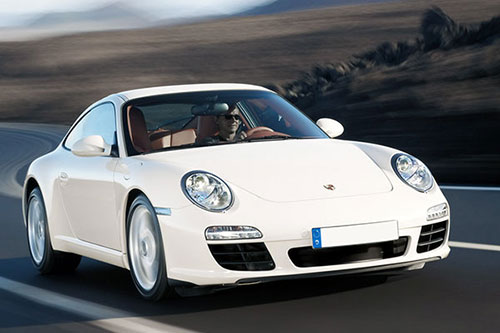 Understanding Your 997 911 Buying Goals
Understanding Your 997 911 Buying Goals
Having a good sense of why you want a Porsche 997 911 and pre-planning your next step makes ownership free and easy. We think a 997 works best for:
- Fun weekend car – basic maintenance and repair costs
- Track car for HPDE – continued investment in reliability and safety
- Long-term investment classic – continual maintenance and expert repairs
We don’t think the 997 works well for:
- Comfortable daily commuter
- Low-cost sports car
- Can’t afford specialist maintenance
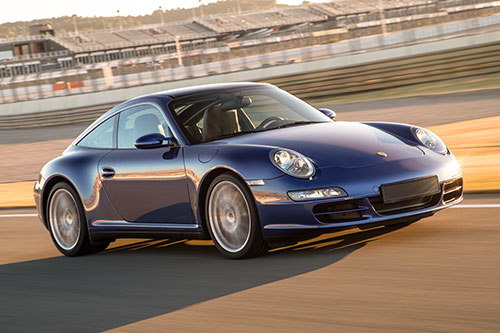 Consider Maintenance Before You Buy a 997
Consider Maintenance Before You Buy a 997
Whilst incorporating the mechanical updates from the previous version, the 997 911 still has several known issues that can prove catastrophic. Engine replacement will cost north of $25K and transmission repairs are costly too. A thorough PPI of the 997 example you plan to buy is essential and you must consider a consistent and accurate maintenance plan going forward to protect the investment in your 997.
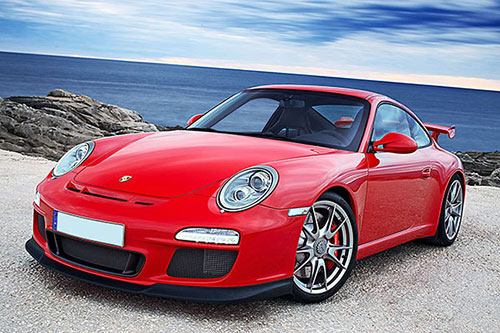 997 911 Buyers Quick Check List
997 911 Buyers Quick Check List
Before you buy any car, there are a series of questions that you need answers to. See the section “What to look for when buying” below for more detail.
- Why is the car for sale?
- Who is selling the car?
- Actual production date – sticker on driver’s door
- Mileage, maintenance, and repair history
- Number of owners
- Title status: Clean / salvage / rebuilt / other
- Accident history (check Carfax or AutoCheck)
- Service records available
- Geographic ownership history (climate matters: dry vs humid areas)
The sections below open to provide more detail. Select a topic that you want more detailed information on.
Porsche 911 997 Brief History – What We Know So far
What We've Learned About the 997 So Far
The 911 997 launched in 2005, is the second generation of 911 after the move from from the air-cooled versions. The 997 improved on the much criticized 996 version with updates to headlights, styling, ride quality, engine reliability, interior, and performance. The 997 is fun and exhilarating to drive, yet practical enough for every day.
During production, which ran until 2012, Porsche produced a number of 997 derivatives and limited production models that included the Carrera, S, Targa, Turbo, Cabriolet, 4wd, and GT versions. The most significant update came in 2009 with the launch of the 997.2 version that introduced revised engines and transmissions.
The 997 platform is one of the most desirable 911 versions to own. The 997 delivers just enough sophistication to get you by everyday, combined with raw Porsche 911 feel of a bygone era. The 997 has proved to be a significant improvement over the 996, however, there are still issues that can be catastrophic if not addressed early. Production for the 997 ended in 2012 with approximately 213,000 models being produced in total.
997 911 Improvements Versus the 996
The 997 911 is more refined, better equipped, and more reliable than the previous version. The highlights are:
- Improved styling with oval headlights
- Better interior quality
- More power and reliability from revised engines
- Improved transmission options
- Better handling and brakes
- Better options
- Better connectivity
911 997.1 versus 997.2
During the production period of the 997 911, Porsche made several significant improvements and changes to the platform. These included 3 different engine types and a radically different automatic transmission change. When shopping for a 997 911 it’s important to be sure which model and which engine and transmission combination you are looking at. More detail on the engine and transmission changes below.
Summary of feature enhancements for 997.2
- New engine design with direct fuel injection
- Power increase and improved acceleration
- Optional 7-speed PDK transmission
- Improved PCM 3.0, better audio/nav, USB & Bluetooth connectivity
- Ride quality more refined
- Improved interior materials
- Updated cosmetics such as LED running lights
997 911 – Significant Engine Variations
Understand Your Engine Choice
When looking to buy a 997, it’s important to understand exactly which engine is in the car you plan to purchase. During production of the 997 911 platform, Porsche made significant engine changes. Early Carrera models were fitted with a M96 3.6L engine that still featured a serviceable IMS bearing – this quickly changed in production to the M96/05 version with a non-serviceable IMS bearing. If the 997 you are looking at was made early in production, check the M96 engine number.
997.1 S models featured the newer design M97 engine that removed the IMS issues. In 2009 with the launch of the 997.2, the engine again changed to a completely new design MA1 series, non IMS, direct fuel injection version in both the standard, GT, and Turbo models.
997.1 Turbo and GT models continued to feature the Mezger designed engine carried forward from the 996 production. More engine detail in sections below.
Porsche 997 911 Reputation
In general, the 997 911 has a great reputation as a solid car that performs well. You need to take care to carefully distinguish between the versions of the 997 to understand the actual implications of its reputation.
2005 – 2007 997.1
More refined than its 996 predecessors but still classic, analog Porsche feel. Revised engine and less IMS bearing issues.
2007 – 2009 997 911
A significant improvement on previous years with the addition of VarioCam Plus. Generally better reliability but engine bore scoring is still an issue with M97 engine models.
2009 – 2012 997.2
Refined, sporty and reliable. Features MA1 engine with good reliability. Optional PDK can be expensive if not maintained correctly.
997.2 Missing Years
Any good 911 from 2008 through 2011 is hard to find — If you remember, the global economy was in free-fall after the housing bubble burst. Subsequently, the banks stole all of our money, destroyed our 401Ks, and then took billions of our tax Dollars as a bailout gift! As a result, not many people rushed out and bought a 911 during this time! Consequently, there is a distinct shortage of available cars between these years. Porsche sold approximately 20K 911 997 versions during the 08 – 11 period making them quite rare.
The early 997.2 should be a bargain, but it’s hard to find – see our article for more detail.
Extensive Knowledge Available For Common Mechanical Problems
The first-generation Porsche 911 997 is now more than 20 years old. The 997 has been driven, raced, broken, dissembled, and put back together again many times. As a result, independent specialists have developed extensive knowledge of these cars’ common mechanical issues. Many examples on the market today have already had preventive work done to address known problems and represent a good investment. A thorough PPI and some historical research into the 997 you want to buy should reveal the details and help you plan your next steps.
Acronyms and Model Options
Porsche Options and Acronyms
Porsche offers a wide range of build options that allow buyers to customize nearly every aspect of their vehicle, from performance upgrades and wheel designs to interior trims and driver-assistance systems. Options and performance technology typically attract an acronym! So, it’s easy to get lost between your PSM, PASM or PADM when shopping for a used car. In our acronym and options section we list and explain the most common acronyms you’re likely to see when shopping for a used 997.
Pricing, Market Trends - Classic in the Making - Buying Resources
Porsche 997 911 Appreciates in Value
Prices are on the rise for the 997 in general and in particular for the 997 GTS, Turbo, GT2, and GT3. Prices on these models have sprung up and continue to rise. The 997.2 is considered the “sweet spot” with DFI engine, better electronics, and yet retains raw feel and compact dimensions.
Market Summary
- Manual transmission cars are at a premium across all trims.
- PDK values are strong on high-performance trims (Turbo S, GTS), but not collectible yet.
- Strong long-term investment potential for GT, Turbo, and GTS variants.
- 997.2 GTS, Turbo (manual), GT3, and RS models are appreciating quickly.
- The 997.2 Carrera S with manual transmission and low mileage is becoming a collector-grade choice.
- Cabriolets and PDK-only cars (esp. base trims with high mileage) are lagging slightly in value.
- Targa 4 and 4S models show stable prices but are a niche segment.
997 911 Modern Classic
The 997 911 is already a modern classic. Highly sought after, with prices rising, the 997 represents a great investment. The 997 has an excellent blend of old style Porsche design from the 993 era (shown below) with oval headlights and bodylines. Underneath is a more reliable engine, more power, and better handling in a seemingly more compact body. The 997 is pretty without being modern angular and delivers a raw Porsche 911 feeling that collectors seek. The 997 is the version that will be rising in value consistently as the years pass by.

Pricing & Market Trends as of 2025
Carrera Models
997.1 Carrera (325 hp) – 2005–2008 – $38,000 – $55,000
997.1 Carrera S (355 hp) – 2005–2008 – $45,000 – $60,000
997.2 Carrera (345 hp) – 2009–2012 – $55,000 – $70,000
997.2 Carrera S (385 hp) – 2009–2012 – $65,000 – $85,000
Carrera 4 Models
997.1 Carrera 4 / 4S – 2006–2008 – $45,000 – $60,000
997.2 Carrera 4 / 4S – 2009–2012 – $60,000 – $85,000
Cabriolet Models
997.1 Cabriolet (C2/S/4S) – 2005–2008 – $40,000 – $55,000
997.2 Cabriolet (C2/S/4S) – 2009–2012 – $55,000 – $75,000
Targa Models – low production
997.1 Targa 4 / 4S – 2006–2008 – $45,000 – $60,000
997.2 Targa 4 / 4S – 2009–2012 – $60,000 – $80,000
Turbo and Turbo S Models
997.1 Turbo (480 hp) – 2007–2009 – $75,000 – $100,000
997.2 Turbo (500 hp) – 2010–2012 – $95,000 – $130,000
997.2 Turbo S (530 hp) – 2011–2012 – $115,000 – $145,000
GTS Models
997.2 GTS / GTS4 (408 hp) – 2011–2012 – $85,000 – $115,000
GT Cars
997.1 GT3 – 2007–2008 – $135,000 – $175,000
997.2 GT3 – 2010–2011 – $165,000 – $225,000
997.1 GT3 RS – 2007–2008 – $190,000 – $250,000
997.2 GT3 RS (3.8) – 2010–2011 – $250,000 – $350,000
GT3 RS 4.0 – 2011 – $550,000 – $750,000
Sourcing Your Perfect 997 911
Most of the good examples of the 997 are going to end up at a Porsche sales specialist we list on our resource page. These cars will attract a premium price, might be on consignment sale, or at a quality auction site when they become available.
You might be lucky. Sometimes, you’ll find an excellent example or a diamond in the rough in an unusual spot. Nobody is going to sell a Porsche cheap, unless 1) they incorrectly perceive problems with the car or 2) there are real problems with the car or 3) they have no clue! Your job is always to be better informed than the seller.
Higher mileage early 997 cars can be a bargain if you are not afraid to take some risks with the M97 engine.
Porsche 911 997 In Detail
997.1 Model Years and Variants
Carrera (RWD) 2005 – 2008
- Engine: 3.6L M96/05
- Power: 325 hp
- 6 speed manual or 5 speed Tiptronic
Carrera S (RWD) 2005 – 2008
- Engine: 3.8L M97/01
- Power: 355 hp
- 6 speed manual or 5 speed Tiptronic
Carrera 4 (AWD) 2006 – 2008
- Engine: 3.6L M96/05
- Power: 325 hp
- 6 speed manual or 5 speed Tiptronic
Carrera 4S (AWD) 2006 – 2008
- Engine: 3.8L M97/01
- Power: 355 hp
- 6 speed manual or 5 speed Tiptronic
Targa 4 (AWD) 2007 – 2009
- Engine: 3.6L M96/05
- Power: 325 hp
- 6 speed manual or 5 speed Tiptronic
Targa 4S (AWD) 2007 – 2009
- Engine: 3.8L M97/01
- Power: 355 hp
- 6 speed manual or 5 speed Tiptronic
Turbo (AWD) 2007–2009
- Engine: 3.6L M97/70 Mezger
- Power: 480 hp
- 6 speed manual or 5 speed Tiptronic
GT3 (RWD) 2007–2008
- Engine: 3.6L M97/76 Mezger
- Power: 415 hp
- 6 speed manual
GT3 RS (RWD) 2007–2008
- Engine: 3.6L M97/76 Mezger
- Power: 415 hp
- 6 speed manual
GT2 (RWD) 2008–2009
- Engine: 3.6L M97 Mezger
- Power: 530 hp
- 6 speed manual
997.2 Model Years and Variants
Carrera (RWD) 2009 – 2012
- Engine: 3.6L MA1.01
- Power: 345 hp
- 6 speed manual or 7 Speed PDK
Carrera S (RWD) 2009 – 2012
- Engine: 3.8L MA1.02
- Power: 385 hp
- 6 speed manual or 7 Speed PDK
Carrera 4 (AWD) 2009 – 2012
- Engine: 3.6L MA1.01
- Power: 345 hp
- 6 speed manual or 7 Speed PDK
Carrera 4 S (AWD) 2009 – 2012
- Engine: 3.8L MA1.02
- Power: 385 hp
- 6 speed manual or 7 Speed PDK
Targa 4 (AWD) 2009 – 2012
- Engine: 3.6L MA1.01
- Power: 345 hp
- 6 speed manual or 7 Speed PDK
Targa 4 S (AWD) 2009 – 2012
- Engine: 3.8L MA1.02
- Power: 385 hp
- 6 speed manual or 7 Speed PDK
GTS (RWD) 2010 – 2012
- Engine: 3.8L MA1.02
- Power: 408 hp
- 6 speed manual or 7 Speed PDK
GTS 4 (AWD) 2010 – 2012
- Engine: 3.8L MA1.02
- Power: 408 hp
- 6 speed manual or 7 Speed PDK
Turbo (AWD) 2010–2012
- Engine: 3.8L MA1.70
- Power: 500 hp
- 6 speed manual or 7 Speed PDK
Turbo S (AWD) 2011–2012
- Engine: 3.8L MA1.70
- Power: 530 hp
- 7 Speed PDK
GT3 (RWD) 2010–2011
- Engine: 3.8L MA1.76
- Power: 435 hp
- 6 speed manual
GT3 RS (RWD) 2010–2011
- Engine: 3.8L MA1.77
- Power: 435 hp
- 6 speed manual
GT3 RS 4.0L (RWD) 2010–2011
- Engine: 4.0L MA1.79
- Power: 500 hp
- 6 speed manual
Sport Classic (RWD) 2010
- Engine: 3.8L MA1.02
- Power: 408 hp
- 6 speed manual
Speedster (RWD) 2011
- Engine: 3.8L MA1.02
- Power: 408 hp
- 7 Speed PDK
911 Carrera Vs. Carrera S – 997.1 Key Differences
S Model Features:
- Larger capacity M97 design engine
- 30 HP more power
- Better throttle response and quicker acceleration
- 5 mph higher top speed
- 0.3 seconds quicker to 60 mph
- Larger brakes
- 19 inch wheels
- Sharper through PASM suspension
- Upgraded interior
911 Carrera Vs. Carrera S – 997.2 Key Differences
S Model Features:
- Larger capacity MA1 engine
- 40 HP more power
- Better throttle response and quicker acceleration
- 8 mph higher top speed
- 0.6 seconds quicker to 60 mph
- Upgraded exhaust
- Larger brakes
- 19 inch wheels
- Sharper through PASM suspension
- Upgraded interior
911 Carrera S Vs. Carrera GTS – 997.2 Key Differences
GTS Model Features:
- 23 HP more power via X51 package
- Better throttle response and quicker acceleration
- 8 mph higher top speed
- 0.2 seconds quicker to 60 mph
- Upgraded PSE exhaust
- Larger brakes
- 19 inch center lock wheels
- Wider Body with black trim
- Upgraded Alcantara interior
997.1 M97 Engines versus 997.2 MA1 Engines
The 997.2 saw the introduction of the MA1 engine family. This completely redesigned engine formed the basis of the engines seen in cars right up to current production. The new engine was not so prone to bore scoring or any of the issues of the M96 or M97 design engine. MA1 engines feature:
- No IMS bearing
- Improved oiling and coolant flow
- Stronger crank cases
- Direct fuel injection
- Greater power output and better fuel efficiency
- Better emissions compliance
- Better overall reliability
997 Engine Details
997.1
- M96.05 – 3.6 L NA – Carrera/4 – 2005 – 2008 – 325 HP
- M97.01 – 3.8 L NA – Carrera S/4S – 2005 – 2008 – 355 HP – With X51 kit ~ 376–381 HP
- M97.76 – 3.6 L NA – GT3 – 2007 – 2008 – 415 HP
- M97.70 – 3.6 L TT – Turbo, GT2 – 2007 – 2009 – 500HP
997.2
- MA1.02 – 3.6 L DFI – Carrera/4 – 2009 – 2012 – 345HP
- MA1.01 – 3.8 L DFI Carrera S, 4S, & GTS – 2009 – 2012 – 385 HP – With X51 kit ~ 408 HP
- MA1.70 – 3.8 L TT DFI Turbo, S – 2009 – 2012 – 500HP
- M97.77, M97.77R, M97.74 – GT3, GT3 RS, GT3 RS 4.0 – 2010 – 2012 – 435 to 500HP
Porsche 911 997 Mezger Engine – Turbo and GT Models
The Mezger engine in the Porsche GT and Turbo models is one of the most revered powerplants in Porsche history—robust, race-derived, and largely free of the issues that plagued the standard M96/97 engines in base 997 models. Named after legendary Porsche engineer Hans Mezger, this engine is a dry-sump, motorsport-derived flat-six, originally based on the design used in the Le Mans-winning GT1 race car.
997 Models With The Mezger Engine
- 911 Turbo (997.1) 2006 – 2009 M97.70 – 3.6L Twin-Turbo
- 911 GT2 (997.1) 2008 – 2009 M97.70S – 3.6L Twin-Turbo
- 911 GT2 RS (997.2) 2010 – 2012 M97.70S – 3.6L Twin-Turbo
- 911 GT3 (997.1) 2007 – 2009 M97.76 – 3.6L NA
- 911 GT3 RS (997.1) 2007 – 2009 M97.77 – 3.6L NA
- 911 GT3 (997.2) 2010 – 2011 M97.74 – 3.8L NA
- 911 GT3 RS (997.2) 2010 – 2011 M97.75 – 3.8L NA
- 911 GT3 RS 4.0 2011 M97.74 – 4.0L NA
Mezger Engine Features
- Dry-sump lubrication prevents oil starvation under hard cornering.
- Split-case crank-case design
- Inherently stronger than the cast M96 case.
- No IMS bearing issues.
- Motorsport pedigree
- Direct lineage from Porsche’s race GT1 engine architecture.
997 911 Transmissions
Manual Transmission 997.1
- G96.30 6 Speed – Carrera
- G96.31 6 Speed – S, 4, 4S
- G97.50 6 Speed – Turbo
- G97.90 6 Speed – GT3
- G97.91 6 Speed – GT3 RS
- G97.88 6 Speed – GT2, RS
Manual Transmission 997.2
- G96.90 6 Speed – Carrera
- G96.91 6 Speed – S, 4, 4S, GTS
- G97.50 6 Speed – Turbo
- G97.90 6 Speed – GT3
- G97.92 6 Speed – GT3 RS
- G97.88 6 Speed – GT2, RS
Tiptronic 5 Speed Automatic Transmission 997.1
- A97.01 5 Speed – Carrera / S / 4 / 4S
- A97.02 5 Speed – Turbo
PDK 7 Speed Transmission 997.2
- DCT 7DT-45HL – 7 Speed – Carrera all models
- DCT 7DT-70HL – 7 Speed – Turbo / S
X51 Option Power Kit
The X51 Power Kit, optional on Carrera S, and factory-fitted on all GTS models includes the following engine modifications:
- Polished ported cylinder heads
- Revised camshafts
- Sport air intake and airbox
- Sports exhaust system
- Remapped ECU
PSE Exhaust
Porsche introduced the PSE exhaust during 996 production but it didn’t really become popular until the 997. Porsche Sport Exhaust (PSE) uses vacuum-actuated exhaust valves to enable the bypass of portions of the muffler. In normal mode, exhaust gases pass through the muffler for quieter operation. In sport mode, the valves open diverting exhaust gas through a bypass or straight-through section – this reduces backpressure, increases volume and resonance, and enhances crackles and pops on throttle overrun.
Sport Chrono Option
The Sport Chrono Package is one of the most well-known and valuable performance options available on the Porsche 997. The most obvious sign of the option is the center dash stopwatch, but underneath, the package delivers significant dynamic enhancements in combination with the PDK transmission.
Sport Chrono Performance
The Sport Chrono option provides a sport plus button that when selected adds better throttle response, quicker gear shifts, rev-matching, integration with suspension management, and launch control in PDK cars. On manual cars, the sport button activates the tuned engine management and suspension control to deliver more performance. The option includes the visual element of the stopwatch fitted to the center of the dash.
PASM
Porsche Adaptive Suspension Management (PASM) allows your cars suspension shock absorbers to automatically adjust their stiffness depending on driving conditions – or at the press of a button. The suspension operates in two modes – standard softer ride designed for comfort and daily use, and sport mode designed for a firmer suspension feel when at the track.
How PASM Works
PASM works by electronically adjusting the suspension through sensors that monitor pitch, roll, steering angle, acceleration and wheel movement. This enables the ride quality adjustment of the suspension in real-time and can work in conjunction with the Sport Chrono option to produce a well balanced and tight suspension setup for higher speed driving.
PASM was optional on the base model Carrera and in general is included with most higher spec models such as the S, Targa, and GTS.
997 911 Common Issues and Reliability Concerns
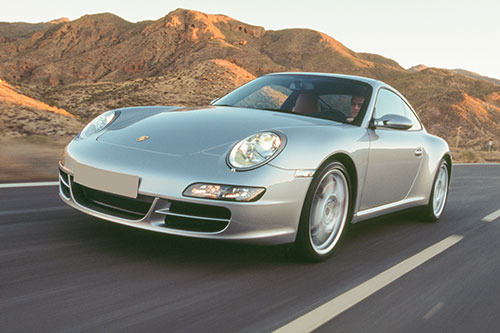 997 911 Known Mechanical Issues
997 911 Known Mechanical Issues
When considering a 997 911, don’t let the noise of mechanical issues or reliability concerns discourage you. The upside is that most of the known problems are well-documented and can be thoroughly evaluated during a pre-purchase inspection. With proper planning, known issues can either be addressed proactively or managed throughout your ownership.
Recommended Porsche Repair Shops You Can Trust
911 997.1 – 2005 thru 2008 M97 Engine Issues
Timing Chain Wear
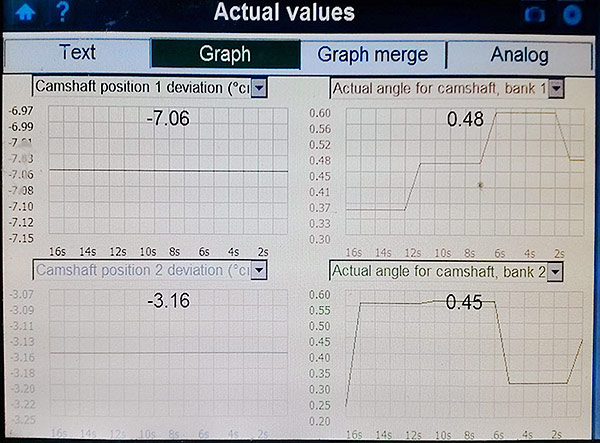 Timing chain issues can affect the M97 engines in the 997 911. It’s important to check the cam to crankshaft timing deviation at a PPI. Wear in the timing system will show up as a deviation angle in the cam to crank measurement. Replacing the chain, tensioners and guides will typically resolve the problem. This is an engine out and expensive job. Most older models have already completed this work – check the history.
Timing chain issues can affect the M97 engines in the 997 911. It’s important to check the cam to crankshaft timing deviation at a PPI. Wear in the timing system will show up as a deviation angle in the cam to crank measurement. Replacing the chain, tensioners and guides will typically resolve the problem. This is an engine out and expensive job. Most older models have already completed this work – check the history.
Higher Mileage Cars
Wear in the timing chain, guides and tensioners will eventually affect all the M97 engines, so the higher the mileage, the more likely this issue will arise.
IMS Bearing Failure - Rare
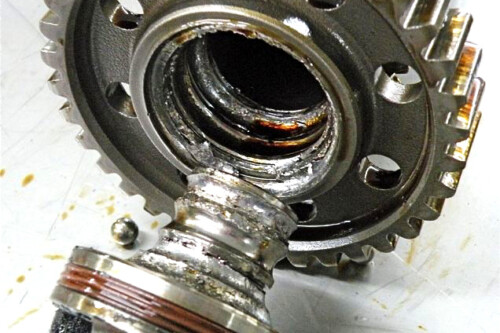 The M97 engine in the 997 built up to 2008 features a non-serviceable IMS bearing. Very early 2005 cars may feature a serviceable bearing and it’s worth checking with the vin number through Porsche for the specific model you look to buy.
The M97 engine in the 997 built up to 2008 features a non-serviceable IMS bearing. Very early 2005 cars may feature a serviceable bearing and it’s worth checking with the vin number through Porsche for the specific model you look to buy.
IMS failure in the M97 engine is rare and should not be considered a barrier to purchase.
More detail on the IMS bearing failure in our common problems section.
Oil Leaks - Rear Main Seal
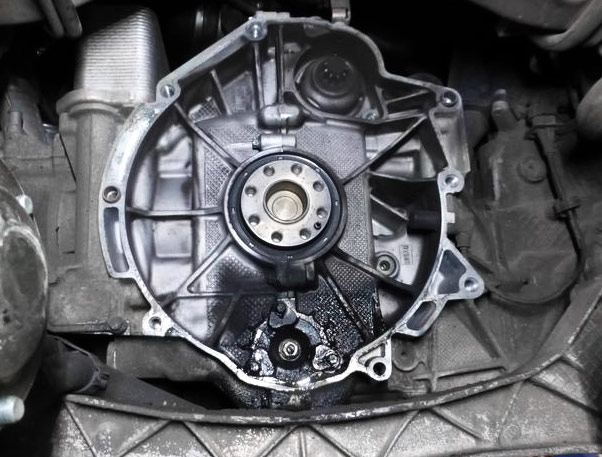 997 M97 Engine Rear Main Seal (RMS) Leak
997 M97 Engine Rear Main Seal (RMS) Leak
There are some common areas where oil leaks occur on the 997 911. Most are easily fixed and are part of the normal wear process. One of the most common areas for an oil leak is the rear main seal. Again, see our common problems page for more information. Oil leaks should not be a barrier to purchase, but they should be considered in terms of the purchase price and the cost of the repair.
Don’t Just Replace the Rear Main Seal
Leaking rear main seals can be signs of other issues and should be thoroughly investigated. On manual cars, a leaking rear main seal can cause significant damage to the clutch and flywheel assembly and adds to the cost of replacement. You only want to replace the RMS once with the most updated version – check for additional causes of the RMS leak before completing the work.
Other Oil Leaks
The M97 engine in the 911 can be subject to several other oil leaks. The most common are leaking valve covers and VarioCam solenoid seals. Both are straight forward to resolve but can be expensive due to the amount of labor involved.
Overheating – Cracked Cylinder Liners
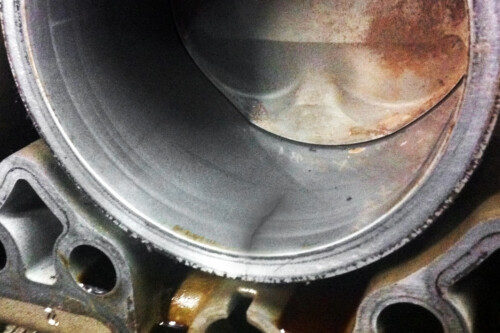 The 997 M97 engine uses one-piece cylinder liners, which are less prone to cracking than the original M96 version. A cracked liner typically causes coolant loss and engine overheating. Sometimes, symptoms can take a good amount of time to appear.
The 997 M97 engine uses one-piece cylinder liners, which are less prone to cracking than the original M96 version. A cracked liner typically causes coolant loss and engine overheating. Sometimes, symptoms can take a good amount of time to appear.
Quick check:
- Start with the engine cold. Note the coolant level. Mark the level on the coolant reservoir with a sharpie.
- Drive for 30 minutes.
- Let the car idle — the radiator fans kick in and the engine temp should remain stable. If it climbs uncontrollably, stop.
- Shut off the engine and recheck the coolant level. It should rise after the drive and then slowly return toward the cold level previously noticed.
- If the level has dropped or stayed low, it may indicate internal coolant loss from a cracked liner. You might smell coolant in the exhaust when the engine runs.
This isn’t a definitive test as external leaks can mimic these symptoms. However, any post-drive coolant loss should be investigated thoroughly.
Cylinder Bore Scoring
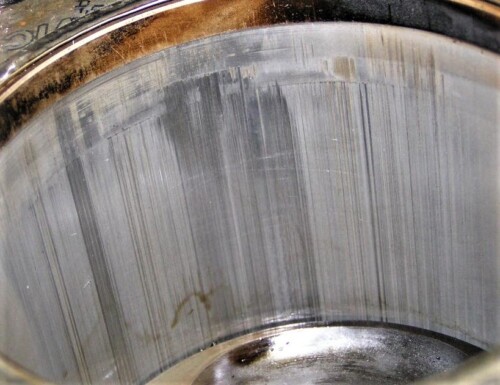 911 997 M97 Engine – Cylinder Bore Scoring
911 997 M97 Engine – Cylinder Bore Scoring
The M97 engine can still be prone to bore scoring. Most of the bore scoring issues have been noted on the 3.8L S model engine. Checking bore scoring should be completed at a thorough PPI. The least invasive way to check for cylinder scoring is to lift the car and listen from underneath with the engine running. A normal M97 engine makes a consistent ticking sound from the valvetrain and exhaust headers.
The Noise You Don’t Want to Hear
A nasty rhythmic knock – not a tick – usually from the passenger-side cylinder bank. This knock indicates piston skirt contact with a scored cylinder wall. This is caused by wear that allows the piston to wobble at the bottom of its stroke. Left unchecked, it leads to catastrophic failure and an engine rebuild.
Scoring often isn’t visible without engine teardown but may be spotted using a borescope through the spark plug tube or more reliably by removing the oil pan and viewing the cylinders from below.
However, during a PPI most sellers will not allow you to remove the oil pan and inspect the cylinders.
Early Signs of Cylinder Bore Scoring
One of the potential early signs for significant engine problems is a mismatch in the sooty deposits inside the exhaust tailpipes and smoke from the exhaust at cold start. These signs usually show a difference in the running efficiency of one bank of cylinders versus the other and further investigation into the cause is necessary. A 997 with one black sooty tail pipe and one clean tail pipe is not a car to buy.
If you hear the knock, have the mismatched tail pipes, or puffs of smoke at cold start, getting the car at zero purchase price will add $25K+ to fix it!
911 997 M97 Air/Oil Separator (AOS) Failure
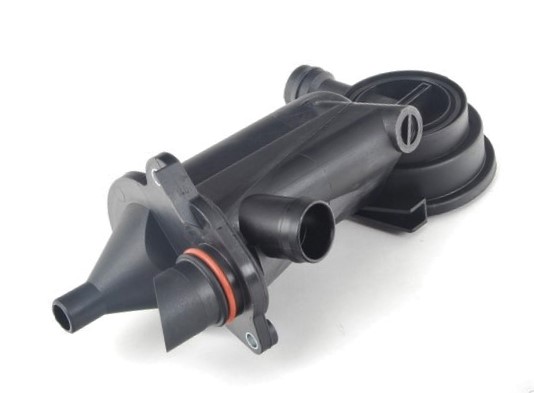 Air Oil Separator
Air Oil Separator
The AOS removes oil from crankcase gases, returning oil to the sump and routing vapors to the air intake for emissions control. When the AOS fails, oil gets pulled into the air intake system. Early signs include smoke from the exhaust on cold start, a check engine light, and fouled O2 sensors. A complete failure produces thick white smoke from the exhaust all the time.
AOS Failure Risks
A failing AOS can also cause excessive crankcase vacuum, potentially damaging the rear main seal – an issue seen in other VAG group engines. It can also throw off fuel mixtures, leading to over-fueling and bigger engine problems.
Engine Coolant Leak
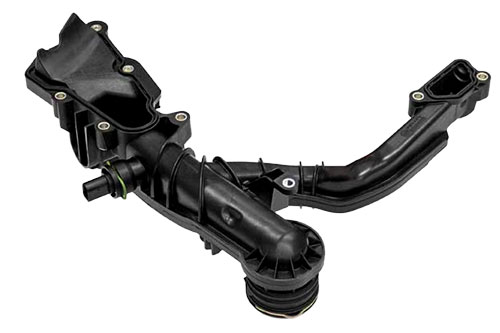 Front Coolant Distribution Pipe Leak
Front Coolant Distribution Pipe Leak
The M97 engine in the 911 features a plastic coolant distribution pipe fitted to the front of the engine. Over time the rubber seals and plastic give way causing a coolant leak. Often initially detected by a coolant smell inside the car, the leak often starts slow and progresses with time. This should be evident on a thorough PPI and is a straightforward job to repair.
Water Pump Failure
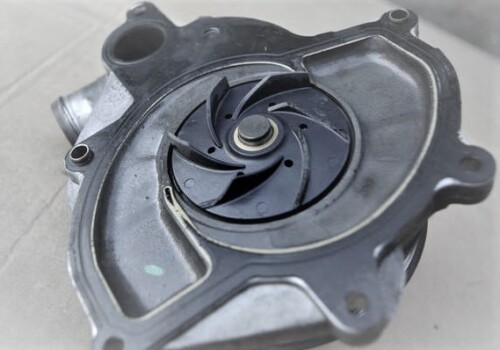 Water pump failure is quite common on the M97 engines. Often the pump will fail without any visible external leaks. The bearing on the water pump shaft starts to wear and this causes a wobble and the vanes on the plastic internals to disintegrate. This can lead to reduced coolant flow and over heating.
Water pump failure is quite common on the M97 engines. Often the pump will fail without any visible external leaks. The bearing on the water pump shaft starts to wear and this causes a wobble and the vanes on the plastic internals to disintegrate. This can lead to reduced coolant flow and over heating.
The water pump is simple to reach under the car and checking the amount of play on the pulley is relatively simple. With the engine running, observe the pulley and see if there is any sign of wobbling. If the pulley wobbles replace the water-pump. Most 997 versions have already completed this work at least once and many consider it a long term maintenance item.
911 997.2 - 2009 thru 2012 MA1 / 9A1 Engine Issues
High Oil Consumption
The problem of high oil consumption affected a good number of early engines in the 997.2. Typically, this resulted in the consumption of a quart of oil every 1K miles driven. In the most severe cases the engine was replaced under warranty. Low mileage versions of the early 997.2 may not have identified this engine issue and it’s hard to spot before you buy the car. Check the soot on the tail pipes and the average fuel consumption shown on the dash. More soot and increased fuel consumption may be signs of oil consumption.
Carbon Build-up

The MA1 engines in the 997.2 are subject to carbon buildup around the intake valves. This causes an intake air-flow restriction and subsequent rough running at idle speed, and a loss of power during acceleration. Typically, the problem is most noticeable between 60K and 80K miles.
The good news is that removal of the carbon buildup is relatively straight forward. There are several ways this can be done from walnut shell blasting through chemical cleaning. Once completed, the runnability of the engine returns to a like new status.
Water Pump Leak and Thermostat Failure
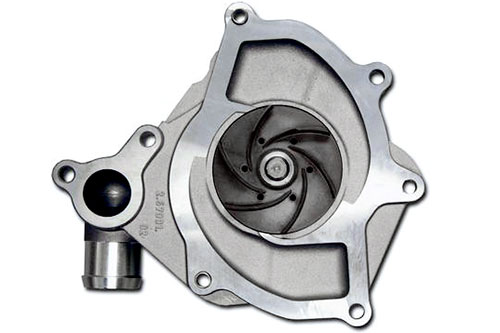 Early versions of the MA1 engine had issues with the water pump and thermostat. Revised versions of the water pump and thermostat were fitted to later cars, so check to see if this work was completed in the history of the 997.2 911 you look to purchase.
Early versions of the MA1 engine had issues with the water pump and thermostat. Revised versions of the water pump and thermostat were fitted to later cars, so check to see if this work was completed in the history of the 997.2 911 you look to purchase.
Water pump – the water pump on the 997.2 starts to leak before failing completely. This is an important area of the PPI to look for visible signs of a minor coolant leak. Some pumps have internal failures and will wobble while rotating. Again, this can be accessed during a thorough PPI.
Thermostat – The thermostat is electronically controlled and mapped to engine performance rather than just coolant temperature. In theory this provides better fuel economy and early response to more aggressive driving. A check engine light is normally triggered upon failure of the thermostat. Most fail in the open position and typically do not cause overheating.
High Pressure Fuel Pump Failure
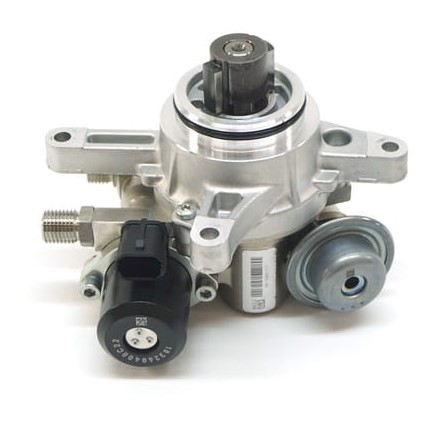 The MA1 engine in the 911 997.2 features a high-pressure fuel pump driven from a camshaft. The high-pressure fuel pump is subject to failure and typically, it initially sets a check engine light and faults associated with the fuel rail pressure.
The MA1 engine in the 911 997.2 features a high-pressure fuel pump driven from a camshaft. The high-pressure fuel pump is subject to failure and typically, it initially sets a check engine light and faults associated with the fuel rail pressure.
Typical symptoms of a failing high pressure fuel pump include:
- Delayed start of the engine or long crank time
- Hesitation or sputtering in acceleration
- Lack of power
- Higher engine temperatures
- Engine stalling and being difficult to restart
Coolant Pipe Connection Leaks
On the 997.2 911 MA1 engine rubber cooling hoses are clamped to an aluminum insert that sits in plastic housings. The glue fails on the aluminum insert and coolant leaks out from various connecting points. Replacement parts are updated with a screw in insert for the rubber hose to connect to that solves this problem.
In addition, early MA1 engines had issues with the water pump inlet tube sealing rings. This typically starts as a minor and frustratingly difficult leak to identify. Often the seals will only open at higher temperatures and can easily be missed with a cold engine inspection.
Cylinder Bore Scoring
 911 997.2 MA1 Cylinder Bore Scoring
911 997.2 MA1 Cylinder Bore Scoring
The MA1 engine can still be prone to bore scoring. Most of the bore scoring issues have been noted on the 3.8L S model engine. In particular, the commonality between the engines noted for bore scoring seems to be related to cold climates. Extreme cold engine starts appear to have a negative effect on the piston to liner clearance and can cause scoring. However, it should be noted that this is rare.
Checking bore scoring should be completed at a thorough PPI. The least invasive way to check for cylinder scoring is to lift the car and listen from underneath with the engine running. A normal MA1 engine makes a consistent ticking sound from the valvetrain and exhaust headers.
The Noise You Don’t Want to Hear
A nasty rhythmic knock – not a tick – usually from the passenger-side cylinder bank. This knock indicates piston skirt contact with a scored cylinder wall. This is caused by wear that allows the piston to wobble at the bottom of its stroke. Left unchecked, it leads to catastrophic failure and an engine rebuild. We recommend checking this with the engine cold.
Scoring often isn’t visible without engine teardown but may be spotted using a borescope through the spark plug tube or more reliably by removing the oil pan and viewing the cylinders from below. However, during a PPI most sellers will not allow you to remove the oil pan and inspect the cylinders.
Early Signs of Cylinder Bore Scoring
One of the potential early signs for significant engine problems is a mismatch in the sooty deposits inside the exhaust tailpipes and smoke from the exhaust at cold start. These signs usually show a difference in the running efficiency of one bank of cylinders versus the other and further investigation into the cause is necessary. A 997 with one black sooty tail pipe and one clean tail pipe is not a car to buy.
Oil Pressure Relief Valve
The oil pressure relief valve regulates oil pressure by diverting excess oil back to the sump once a certain pressure threshold is reached in the engine. It protects engine components from damage due to excessively high or low pressure. In some MA1 engines, the valve needs to be replaced for a number of reasons. Symptoms include leaks, fluctuating oil pressure on the dash gauge at cold start, delayed pressure buildup after cold starts, oil pressure warning light momentarily triggering, inconsistent oil pressure readings, especially when hot, and noisy valve lifters due to poor oil flow at cold start.
At the PPI a cold start test should carefully monitor the oil pressure performance and note any oil leaks on the oil pan.
Hydraulic Belt Tensioner Failure
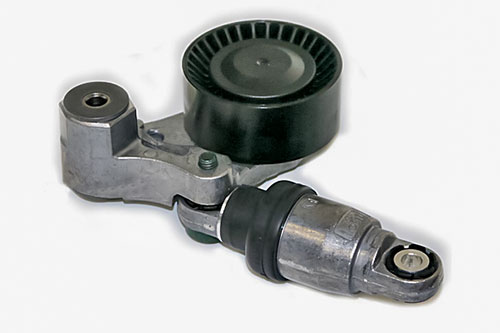 The MA1 engine features a hydraulic belt tensioner that has a life span of about 60K miles or 6 years. The telltale sign of impending failure is rust on the bolt that holds the tensioner to the engine. Hydraulic fluid leaks out, the tension is lost, and the bolt head rusts. Tension on the belt is critical for driving the water pump, AC compressor etc. and a correctly tensioned belt is a critical engine component.
The MA1 engine features a hydraulic belt tensioner that has a life span of about 60K miles or 6 years. The telltale sign of impending failure is rust on the bolt that holds the tensioner to the engine. Hydraulic fluid leaks out, the tension is lost, and the bolt head rusts. Tension on the belt is critical for driving the water pump, AC compressor etc. and a correctly tensioned belt is a critical engine component.
The tensioner has been update a number of times and this work should be evident in the history of the pre-owned 997 you plan to buy. If there is no history of this work plan to replace the tensioner and preempt the problem.
997 911 Transmissions – Concerns and Reliability
Manual Transmission
Given the age of the transmission in the 997, some wear is inevitable.
Check the smoothness of changing through the gears. Worn transmissions will have a significantly notchy feeling and difficulty finding the next gear. Also, a worn transmission will often pop out of gear under acceleration. A manual transmission fluid change should have been completed in the service history by now. Likely, the repair history will also show replacement of the shift linkage cables – if not, it is best to replace them sooner rather than later.
Shifter Cable Issues
Shifter Cable Issues
The cables connecting the gear change lever and the transmission on the 997 can often become worn. This results in difficulty engaging gears, sloppy or a vague shifter feel, and a notchy gear shift feeling. Check the history on the car and see if the shifter cables have been replaced. If not, we suggest changing them sooner rather than later for an improved driving experience.
Options for Changing Shifter Cables
There are updated Porsche cables available and a series of aftermarket options designed to improve the shifting feel. Most include metal bushing kits, more adjustment range, and are an improvement on the original cables. The addition of a short throw shifter also significantly improves the 987 gear change.
How Long a 997 911 Clutch Should Last
Clutch life varies by driver — some fail by 15K miles, others last over 100K. Signs of wear include slipping (high revs, no acceleration) and a burning smell. Judder on clutch release may indicate oil contamination from a leaking RMS.
A slipping clutch can quickly damage the flywheel, adding $700 in parts if replaced together — which is recommended. Check service history and expect clutch work eventually on any used manual transmission 911.
Clues to the life of the clutch can be found in the PPI based on over revs. Track use tends to shorten the life of the clutch, so checking the over-revs and understanding if the car has any track history can provide some insight into the amount of clutch life left.
Clutch Fluid Slave Cylinder Flush
The clutch slave cylinder in the 997 shares the same hydraulic fluid reservoir as the brake system. Flushing the slave cylinder of old fluid is often overlooked during a brake fluid flush procedure. We recommend that you perform this simple job immediately after your purchase as a maintenance precaution. Despite a cars history of brake fluid flush maintenance, you might find what comes out of the clutch slave cylinder is old and dirty fluid. The old fluid can easily degrade the performance of the clutch which leads to increased wear.
997.1 Tiptronic Transmission
The Tiptronic transmission in the 997.1 is generally very reliable and relatively straightforward to repair. Fluid maintenance at appropriate time or mileage is critical. Often, maintenance will be neglected because of lower mileage, so on a used 997 with Tiptronic, it’s important to understand the maintenance history and catch up if necessary. Known issues are shown below:
Slow or Harsh Shifting
Symptoms: Delayed gear changes, rough shifts, or failure to engage gear.
Causes: Low or old transmission fluid, worn valve body, or aging valve body solenoids.
Repairs: Fluid and filter change. In some instances, valve body rebuild or replacement.
Transmission Overheating
Symptoms: Warning lights, limp mode, or erratic behavior after spirited driving.
Causes: Clogged transmission cooler or radiator, or low fluid level.
Repairs: Replace the transmission cooler and ensure fluid is at the correct level.
Electrical Control Issues – Faults
Symptoms: No response to gear selector, stuck in gear, dash warning lights.
Causes: Faulty Tiptronic control module, shifter switch, or wiring faults.
Repairs: Diagnostic scan to locate faults; replace control module or sensor if necessary.
Torque Converter Problems
Symptoms: Shuddering at low speeds, poor acceleration, high RPMs with low power.
Causes: Worn or failing torque converter lock-up clutch.
Repairs: Torque converter replacement.
997.2 911 PDK Transmission Concerns
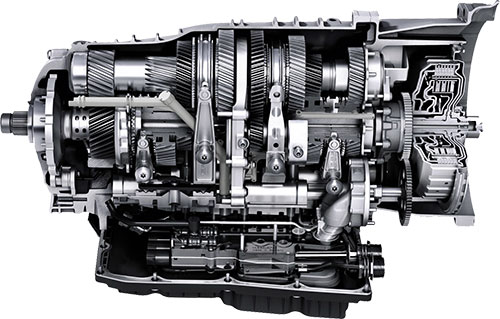 In general, the Porsche PDK transmission in the 997.2 is extremely reliable. However, several common issues have arisen with the PDK over time, and many have led to expensive repairs being deemed necessary.
In general, the Porsche PDK transmission in the 997.2 is extremely reliable. However, several common issues have arisen with the PDK over time, and many have led to expensive repairs being deemed necessary.
PDK Maintenance is Critical
The Porsche factory recommendations for maintenance of the PDK transmission have also evolved over time, with maintenance now being performed more frequently than originally recommended at the introduction of the transmission. We recommend you speed up the maintenance on your 997.2 PDK transmission.
The major problems with the PDK relate to the unwillingness of Porsche to allow the dealership channel to take the PDK apart and a lack of available parts! That tends to require replacement of the transmission – $20K+ and the subsequent complaints. The good news is the Porsche PDK transmission is fully repairable for a fraction of the cost of replacement.
See PDK known problems and expert PDK Repairs.
997 Cooling System Concerns
Front Radiators and Air-Conditioning Condensers
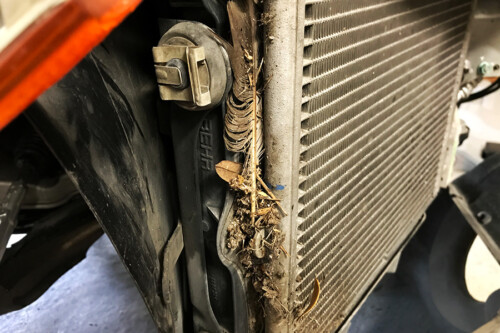 The 997 front-mounted radiators and A/C condensers sit low and exposed, making them prone to stone damage and debris buildup – especially leaves trapped around the sides.
The 997 front-mounted radiators and A/C condensers sit low and exposed, making them prone to stone damage and debris buildup – especially leaves trapped around the sides.
The ducting to the radiators and condensers should be cleaned regularly or protected with mesh screens. Thorough cleaning requires removing the front bumper – something most owners skip.
When inspecting a 997 for purchase, shine a flashlight into the front air intakes. If you see leaves or buildup, it’s a sign of neglect. Corroded or damaged radiators/condensers can’t be repaired—only replaced.
Front Coolant Pipes
Make sure during the PPI that the front coolant pipes are inspected for leaks. The coolant pipes leading from the front radiators have a series of joints from rubber to plastic and to metal in their journey from the front of the car to the engine. The joints between the pipes can leak causing coolant loss toward the front of the car – typically around the wheel wells.
Leaking Coolant Reservoir
A common and frustrating issue with the 997 is a small crack in the coolant reservoir. It often starts with a faint coolant smell while driving and slow fluid loss. The reservoir can suddenly split and dump all the coolant risking engine overheating.
Replacement isn’t costly but is tricky due to the tight space. Replacement plastic reservoirs can frustratingly be cheap and not well made, often leading to repeating this job multiple times over the 987 lifecycle. We recommend you get the part from Porsche for the latest and best quality.
997 911 Braking System Check Points
Checking for Brake Wear
 997 911 Brake Wear
997 911 Brake Wear
The brakes on the 997 911 are generally excellent. The S, GTS and Turbo models features larger brakes than the standard 911 997 Carrera. Brake pad material does degrade over time – check on low mileage examples to see when the last brake service was performed. The brake fluid history should show a change every few years regardless of mileage. Measure the amount of brake pad material remaining – you want more than 3mm. At the 3mm mark the brake pad wear sensor will trigger the replace brake pads light.
A complete brake service with pads, rotors and sensors can be quite expensive. So, if you’re buying from a used car vendor, look for new pads on old rotors. Both the pads and rotors should always be changed at the same time. Used car centers are famed for just replacing the pads and leaving on the old rotors. “The car has new brakes” – not if the rotors weren’t changed it doesn’t.
Worn Rotors Crack or Disintegrate Quickly
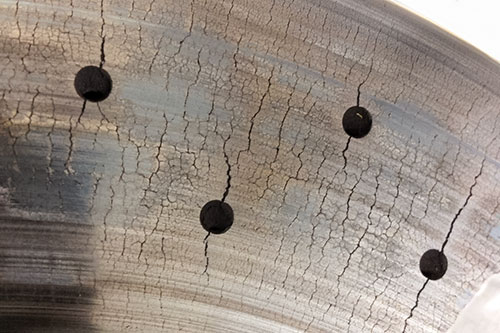 This can be particularly unpleasant when driving! The 997 911 has drilled rotors. Look carefully to see how clear the drill holes are and make sure there are no cracks between the drill holes. Cracks between the drill holes can lead to a much bigger crack developing and rotor failure very quickly under heavy braking. A failed brake rotor when you are trying to stop quickly is an unpleasant experience!
This can be particularly unpleasant when driving! The 997 911 has drilled rotors. Look carefully to see how clear the drill holes are and make sure there are no cracks between the drill holes. Cracks between the drill holes can lead to a much bigger crack developing and rotor failure very quickly under heavy braking. A failed brake rotor when you are trying to stop quickly is an unpleasant experience!
Check the lip on the rotor. The size of the outer lip indicates the degree of pad wear. New pads and lipped rotors suggests a pad slap brake job. Always change the pads and rotors at the same time. New pads will wear very quickly on old rotors.
Brake Fluid Condition
Brake fluid has a limited lifetime. Low mileage cars often skip the brake fluid service, so it’s important to determine the health of the brake fluid on the 997 you plan to buy. Check the history for the last brake fluid flush in the service records. If the last brake fluid service was more than 2 years ago, we recommend you complete a brake fluid service sooner rather than later.
The brake fluid you see in the reservoir maybe be clean and look healthy. This is not a good test. What you can’t see is what matters – the fluid in the caliper at the end of the line the reservoir connects too. Despite the fluid in the reservoir being clean, the fluid in the caliper could easily be burnt and degraded.
Clutch Slave Cylinder
The clutch slave cylinder in the 997 shares the same hydraulic fluid reservoir as the brake system. Flushing the slave cylinder of old fluid is often overlooked during a brake fluid flush procedure. We recommend that you perform this simple job immediately after your purchase as a maintenance precaution. Despite a cars history of brake fluid flush maintenance, you might find what comes out of the clutch slave cylinder is old and dirty fluid. The old fluid can easily degrade the performance of the clutch which leads to increased wear.
Bodywork, Cabriolet Top, Suspension, and Tires
Windows and Convertible Top Issues
if you are looking at a cabriolet 911, test the cabriolet top thoroughly to ensure smooth operation. Many issues with the top are minor but can be frustrating if discovered on your first sunny day drive. Check if upgrades or repairs to the cabriolet top mechanism are in the car’s history.
The tops degrade with exposure to the environment. Many can be refreshed but in some circumstances, replacement will be needed.
Window Problems
Window Drop Problems
The 911 997 Cabriolet commonly had issues with the regulation of window drop when opening the driver’s door. Pulling the handle should cause the window regulator to drop the window below the stop point inside the convertible top. The window should rise and hit the stop point when the door is closed. This functionality can be lost during a battery change, or be caused by a faulty widow regulator, or faulty door handle microswitch.
In some circumstances the window regulator can be reset to solve the problem. This is done by relearning the stop points. With the ignition on:
- Close the door fully.
- Fully lower the window using the window switch. Hold the switch down for 5 seconds after the window reaches the bottom.
- Fully raise the window using the window switch. Hold the switch up for 5 seconds after the window reaches the top.
Thoroughly check the window drop on both doors before buying a 997 911 Cabriolet.
Body Water Drains
Inspect the car for water leaks, especially behind the driver seat. Blocked roof drains can cause water to enter the cabin and damage electronic modules. Clearing drains is easy; neglecting them is costly. Check thoroughly for signs of water leaks around the top and on the floor area.
Rear Spoiler
The rear spoiler on the 911 997 is automatically deployed based on speed but can also be manually controlled through an interior switch.
Deployment Speed
- Automatically rises at approx. 75 mph (120 km/h).
- Automatically retracts at approx. 50 mph (80 km/h).
Check the functionality of the rear spoiler. Common issues include being stuck up or down and a general failure to deploy. If there’s a malfunction, a spoiler control failure message or warning light may appear on the dashboard. Spoiler failure issues can be expensive, so check the functionality thoroughly before purchase.
Suspension Wear
911 997 Suspension Issues
The 997 suspension is extremely durable. However, rubber bushings and struts can be worn with age. Listen for clunks or squeaks and check for fluid leaks from suspension struts. The most common issues are as follows:
Worn Control Arm Bushings
- Symptoms: Clunking noise over bumps, uneven tire wear, loose steering feel.
- Cause: Original rubber bushings degrade over time.
- Fix: Replace control arms or bushings. Many owners upgrade to polyurethane or monoball bushings for improved precision.
Failed Lower Control Arms
- Symptoms: Clunking, instability under braking, poor alignment retention.
- Fix: Replace with OEM or upgraded units
Top Mounts / Strut Mounts
- Symptoms: Squeaking, clunking over bumps, poor ride quality.
- Fix: Replace top mounts when changing struts/shocks. Consider GT3 mounts or aftermarket alternatives for improved feel.
Worn or Leaking Shocks or Struts
- Symptoms: Bouncy ride, nose dive when braking, poor cornering stability.
- Fix: Replace shocks. Many aftermarket options available.
Sway Bar End Links & Bushings
- Symptoms: Clunks or rattles during cornering.
- Fix: Replace worn end links or sway bar bushings. Consider adjustable end links if running coilovers or lowered ride height.
Alignment & Ride Height Issues
- Symptoms: Pulling to one side, excessive inner tire wear.
Rear Tire Wear and Tire Age
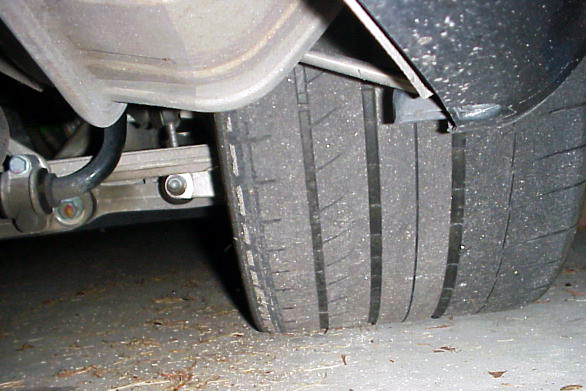 Uneven tire wear, especially on the inner rear shoulders, often points to worn rear control arms, poor toe setting, aggressive camber settings, and general poor alignment.
Uneven tire wear, especially on the inner rear shoulders, often points to worn rear control arms, poor toe setting, aggressive camber settings, and general poor alignment.
Rear tires are expensive and poor alignment can quickly degrade their lifespan.
Tire Manufacturing Date
Check tire DOT dates — anything over 5 years old should be replaced, even if tread looks good. Low-mileage cars often have old, degraded tires that can fail despite the minimal wear level. Each tire has a month and year of manufacture clearly marked on the side wall.
PASM Suspension Option
The PASM (Porsche Active Suspension Management) system on the 911 997 is generally reliable but can present issues that are slightly different from the standard suspension system.
PASM Shock Failure
- Bouncy or overly firm ride
- One corner feels soft or collapsed
- Fluid leaks near the dampers
- Suspension noise over bumps
Height Sensor Failure
- PASM warning light on dash
- Car rides harshly or inconsistently
- Stored diagnostic codes
Intermittent PASM malfunction messages are often caused by water ingress.
Headlights and Taillights
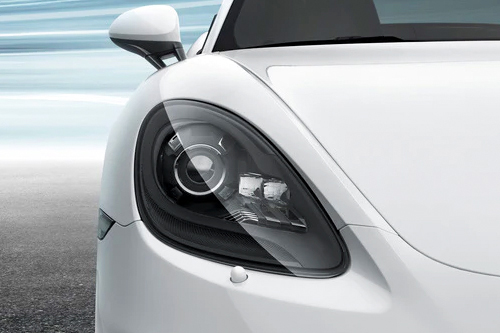 The 911 997 was fitted with a variety of newer style headlight depending on the individual build options and model. The option packages included daylight running lights, dynamic cornering function, and PDLS plus. Some models featured black tinting inside the headlight.
The 911 997 was fitted with a variety of newer style headlight depending on the individual build options and model. The option packages included daylight running lights, dynamic cornering function, and PDLS plus. Some models featured black tinting inside the headlight.
It’s important to understand which option is included with the 997 you are interested to buy. The difference between bulb replacement and headlight unit replacement is substantial. Check the headlight functionality and the condition of the lenses thoroughly. Check for condensation or cracks that could lead to condensation. Replacement of the headlight unit is expensive, with the enhanced lighting package option typically more than $2K per light unit. Control modules for the headlights may also require additional coding if replaced.
Taillights
The 997.2 features LED taillight assemblies. These give the car a modern feel, however, you should pay close attention to the health of the taillight assembly during a PPI. Replacing the units if a section of LED fail is expensive.
911 997 Maintenance, Running Costs, Repairs
911 997 Maintenance Service Schedule
Get a Quote for the Next Maintenance Service
Our guide to maintenance on the 997 covers everything you need to know about efficiently servicing your 911. If you have further questions or concerns about the maintenance requirements of your 997 911, you may find answers that can help you in our guide to 911 maintenance service questions.
Get a More Personable Relationship with a Porsche Repair Shop
Many dealerships are limiting service to newer vehicles, often turning away Porsche models over 10 years old due to a lack of technicians trained in older cars. In contrast, independent shops usually have decades of experience, offer a more personalized service, and often allow customers to see and understand the work being done on their car first-hand. We recommend you use a local recommended Porsche repair shop for your 911 997.
997 911 Running Costs
Create a maintenance plan based on inspections and the advice from a repair shop. We recommend you budget $80 to $100 depending upon the model per month for routine maintenance service, covering annual, intermediate, and major maintenance over four years. Plan extra for new tires and brakes based on mileage and condition.
Additional costs include repairs, insurance, and taxes. Repair costs can vary dramatically depending upon the issue that needs to be resolved. We suggest budgeting $100 per month to cover likely repairs over a four year period.
997.1 911 – Lower purchase price – higher repair costs likely
997.2 911 – Higher purchase price – lower repair costs likely ( with the exception of PDK)
997 Parts Availability
The availability of spare parts for the Porsche 911 997 is very good. Many original parts were revised and reused on the later chassis and there are many commonalities between the other coupe models and the 997 911. Many components are still in production or at least readily available through after-market suppliers. Parts that are harder to find include interior trim components, cabriolet motors and sensors, headlights, and infotainment system replacements.
The Buying Process
What to Look for When Buying a 997 911
Pre-Purchase Inspection (PPI)
Once you’ve found a potential 911 997, your first step should be a thorough inspection by a Porsche specialist. A pre-purchase inspection (PPI) can uncover hidden mechanical issues that aren’t obvious at a glance. It’s important to use a competent and experienced shop to perform the PPI. Providing the shop with any known repair or maintenance history on the car will help them with a detailed assessment.
Feedback From a Pre-Purchase Inspection
The inspection should uncover the details of the mechanical wear on the 911 and the general condition. What you also want to know from the report is what’s next. Before making the purchase, you want to know the extent of maintenance work needed on the car in the next few years. Use our maintenance guide for the 997 to map the history to your next maintenance steps. You also want to know the age and health of the battery and the DOT on the tires.
Fault Codes and Over-Revs
The PPI Should Check Fault Codes and Emissions Readiness
Before buying any car, it’s crucial to check when the OBD fault codes were last cleared and to verify the emissions monitor status. A seller can easily clear codes just before your test drive, which also resets the emissions monitors to “not ready.”
Since emissions tests require multiple drive cycles, hidden issues may not reappear for many miles. During a PPI the shop should confirm that the emissions system shows “ready” – this indicates the car has been driven enough since the last reset and isn’t hiding recent faults.
How Hard Has the Car Been Driven – Over-Revs
Revving an engine to the red line is safe and even healthy for the 997 engines when done correctly. A proper gear change at redline may briefly raise RPM slightly—this is normal and harmless. However, selecting the wrong gear (like downshifting instead of upshifting) can cause the engine to over-rev way beyond the red line. This common mistake, known as a miss-shift, has led to catastrophic engine failures in many Porsches.
Recorded Events
Fortunately, Porsche’s engine management system logs key data, including engine over-rev events. The ECU permanently records engine hours and when these events occurred.
There are six over-rev levels, from minor redline hits to extreme, potentially engine-damaging RPM spikes. Lower-level events often just show spirited driving, but higher-level over-revs may indicate serious stress and events that could shorten the engine life. During a PPI you want to know what over-rev details are recorded in the ECU.
Track Use, HPDE & Over-Rev Insight
Many Porsche owners enjoy track days, where gear changes often occur near redline. These can trigger entries in the lower over-rev ranges, which are logged by the ECU. Multiple entries in these lower levels may suggest frequent track use, offering insight into how hard the car has been driven—and how well it may have been cared for over time. Discuss and take the opinion of a specialist Porsche shop based on the over-rev detail stored in the car you want to purchase.
Check for Completed Recalls
Specific models and production ranges of those models can require repairs under manufacturer recalls. It’s worth checking to make sure that the pre-owned Porsche you plan to buy is up to date with the recalls required on the specific model. You can do this most effectively with:
National Highway Traffic Safety Administration
or directly with Porsche:
Why Is the Car for Sale?
There are often very genuine reasons why a car is for sale. We all move on, however, older cars are often put up for sale when mechanical issues are deemed too expensive. Did deep and if possible, understand why the car is for sale.
Who Is Selling the Car?
If you’re buying from a used car dealer, find out where they sourced the 997. A Porsche-focused dealer is a good sign. But if the dealer typically sells budget minivans, proceed with caution. Who trades in a Porsche at a used car lot that doesn’t specialize in them? Often, it’s someone offloading a car with hidden issues, betting the dealer won’t notice. Do your homework.
Actual Production Date – Sticker On Driver’s Door
Most cars are advertised using the model year or registration year. This can be misleading. The production year runs August through July. That means cars produced in August through December are described as the following year’s production e.g. September 2001 production is often called a 2002 model year car.
Why Does This Matter?
The simple answer is parts. The actual production date is critical to understand the components fitted on the car. In the 997 case, the change in IMS bearings and engines for example, happened in a specific production window. Knowing the actual production date for the 997 you plan to buy can help you determine the real value of the car and the potential for issues.
Mileage Covered
10K miles per year is considered good condition for most cars. However, most 987 Boxster cars do not do 10K miles per year. Typically, they will have covered more mileage in their first ten years of age and then progressively slowed down in mileage per year subsequently. What’s important to discover is how the maintenance for the 997 changed over the mileage covered and its frequency – that will likely tell you more about the health of the car versus the total mileage covered.
What Type of Mileage
High speed freeway driving versus around town local driving can have a serious influence on the overall engine and transmission condition. Long drives at higher speeds tend to produce less wear as opposed to lots of cold starts and short journeys. Look at the location of the owners and make a judgement based on the mileage recorded over the time the owner used the car.
Low Mileage Garage Queen – Not So Fast!
While low mileage on a 997 is very appealing, it can come with its own set of issues. Infrequent use often means missed service intervals, leading to age-related wear in fluids, seals, tires, brakes, and clutch components. Lack of maintenance based on time is risky. For example, spark plugs should be replaced every 10 years, regardless of mileage, and brake fluid flushed every 2–3 years. Tires too may have good remaining tread but can still be unsafe if over 5 years old.
Low-mileage cars often demand a premium but be sure to budget for catch-up maintenance after your purchase.
Number of Owners
For most Porsche cars, especially 20 year + 997s, the number of previous owners matters less than the car’s maintenance history and overall condition. What really matters is how long each owner had the car and how well they took care of it. If you see an increasing number of owners over a decreasing amount of time, that may well be a sign of neglect
Title status, Accident History
There are several good ways to check the title status on a vehicle available. All you need is the vin number.
- National Motor Vehicle Title Information System (NMVTIS) – Government-backed, very reliable
- Carfax – Detailed history reports
- AutoCheck – Similar to Carfax
- VINCheck (NICB) – Free check for theft/salvage
Geographic Ownership History
Understanding where the car has been in the country can give you some clues as to its history of use. Cars in the south are likely to have been driven regularly as the weather does not preclude the enjoyment of the 997. However, cars in northern states are often stored during the wintertime and experience a good number of months without being driven. Climate too can be a factor. Hot and dry versus high humidity has different effects on the health of rubber components and interior trim for example.
Porsche 997 911 Years to Avoid
This is a common question and not one that is easily answered. All 997 model year production has some potential issues that you should pay close attention to. The later production 997.2 cars are significantly more desirable and as a result more expensive. The early 997 is a real bargain vs. the mishap prone late 986 version, however, there are still issues to be considered such as engine bore scoring.
Buying Out of State or From Distance
As luck would have it, the Porsche you really want is on the other side of the country! This used to be an issue, but these days buying cars out of state is commonplace. There are technology based tools to enable a smooth transaction and help minimize the risks, and excellent ways to transport you car home.
Tips for Buying a Porsche Out of State
- Start with a thorough online evaluation
- Get detailed photos: exterior, interior, engine bay, undercarriage, and tires.
- Request a walkaround or live video call (FaceTime or Zoom) to confirm condition.
- Run a VIN check
- Use Carfax, AutoCheck, or VinAudit to check for accidents, title issues, maintenance history etc.
- Get an option list or build sheet using a vin decoder
- Use an escrow service for the transaction
- Insure the car before transport to you
Transporting the Car – Recommended Car Carriers
Some buyers like to fly in, put their hands on the car, complete the transaction and drive home. In many cases this is not practical, and so buyers turn to shipping companies to transport their new purchase directly to their home. If you’re buying from a Porsche sales specialist, they will likely have an option and can recommend a car shipping company they typically work with. Here are some shipping companies that we have worked with that offer excellent service:
Find a Local Porsche Repair Shop For Support
Recommended Porsche Repair Shops You Can Trust
Ownership and Driving Experience
What to Expect and How to Personalize Your 911 997
What the 987 is Like to Live With
All versions of the 997 are easy to drive, park, and have fun in. The ride quality and handling improved through the versions, but even the original 997 is bags of fun to drive in most conditions. The early version auto transmission is sluggish unless you shift manually using the Tiptronic. Later versions, especially the S model, certainly have a bit more zip about them. The early 997 manual transmission model is more raw and analog experience than the later more sophisticated 997.2 PDK transmission cars. The PDK versions are a lot of fun to drive fast and really easy to handle in traffic.
Too Much Stuff
There’s not much room in a 911 997 for your stuff. The front trunk space can’t do golf clubs or even a reasonable size suit case. That means practically, the 911 997 is not the car to go shopping in or extended road trips – unless you pack small. The rear seat area does offer the option for more space to hold things including very small people.
Driving Experience
Raw Porsche – The 997 steering is hydraulic, precise, and full of feedback—very different from the electric systems in newer cars.
Balance and Handling – Rear-engine layout gives unique feel that can take some time to get used to. Dry traction is strong, especially in AWD models, wet traction takes a little more experience.
Power – Even base 997 Carreras are fast by modern standards. Raw power is available in the Turbo models if you really want to scare yourself.
Transmission – The manuals transmission is slick and easy to drive with a traditional feel. The tiptronic (997.1) feels a little dated and sluggish. The PDK is fast, easy to drive, and changes gears very smoothly.
Daily Usability
Compact Dimensions – The 997 fits in normal parking spots and has great visibility for low speed maneuvering.
Comfort – Surprisingly good ride quality for a sports car and especially enhanced with the PASM option.
Road noise – the 997 can produce higher than average noise when driving.
Save 20% - Efficient Maintenance Service
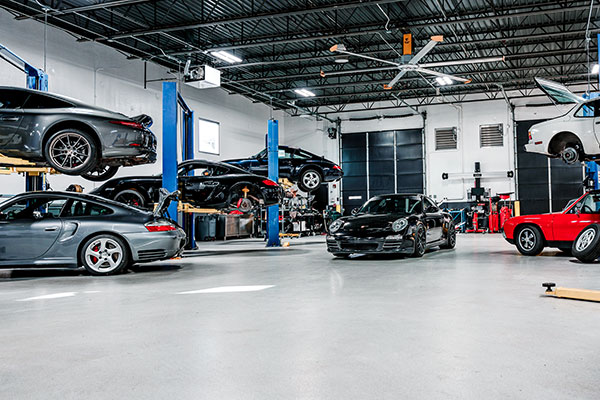 911 997 Recommended Maintenance Intervals
911 997 Recommended Maintenance Intervals
Maintenance on the 911 997 is due annually, with an intermediate service at 2 years or 20K miles, and a major service at 4 years or 40K miles.
PDK Transmission Maintenance
If the 997 you plan to buy is fitted with a PDK transmission, we highly recommend performing maintenance on the PDK sooner than the factory recommendations. PDK maintenance is now recommended at 40K miles or 4 years to prevent expensive PDK problems.
Recommended Porsche Repair Shops
Save 20% on Maintenance Service and Repairs
Interior Expectations
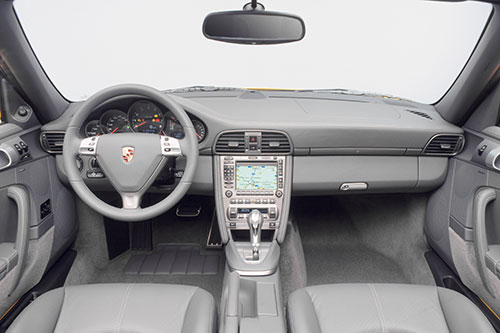 Original versions have some plastic interior parts that can easily become discolored due to wear and tear. However, most of the interior is leather and solid materials based. The digital information screen is prone to losing functionality and feels a little dated. Upgrades are available (see below). Generally, the interior is simple, well laid out, and practical. The later versions have better styled interiors than the original, improved infotainment systems, and the S, and GTS model in particular, has a very sporty feel.
Original versions have some plastic interior parts that can easily become discolored due to wear and tear. However, most of the interior is leather and solid materials based. The digital information screen is prone to losing functionality and feels a little dated. Upgrades are available (see below). Generally, the interior is simple, well laid out, and practical. The later versions have better styled interiors than the original, improved infotainment systems, and the S, and GTS model in particular, has a very sporty feel.
Infotainment Retrofit
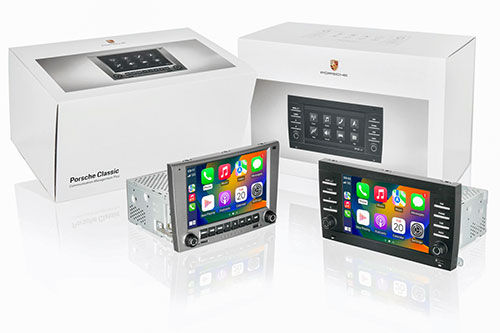 Porsche Classic Communication Management Plus
Porsche Classic Communication Management Plus
Porsche has made available infotainment system retrofit upgrades for various models from the 997 forward. This gives you the option to remove the older style infotainment system and replace it with the latest version PCCM Plus. Great option if you must be connected all the time. The cost is quite high, but it’s a great way to modernize the infotainment in a classic model.
The PCCM Plus equipment includes a 7-inch touchscreen with a state-of-the-art graphical display. It can enable the reception of digital radio stations such as SiriusXM® satellite radio. The latest navigation updates are included and media playback is possible via USB stick, Bluetooth®, Apple CarPlay and Android Auto™. In some models, personal settings for the car can also be stored for the lights, the windscreen wipers, the climate control and the locking.
Add a Short Throw Shifter for More Fun
If you buy a manual transmission car, the biggest change you can make to the livability of the car is to install a short throw shifter. The distance between gears on the manual trans 997 definitely improved when compared to previous versions, however, it still seems to long for a tight sports car. A short throw shifter improves the feel of the car tremendously and reduces the likelihood of missing a gear.
Tire Management
The 997 uses Porsche N rated tires. If the car you buy has 19-inch rims, you’ll be looking at more than $1200 for a set of 4 tires. The rear tires will wear more quickly than the fronts on the 997 due to the suspension setup. It’s important to stay on top of vehicle alignment – any loss of alignment on the rear of the 997 will eat the inner shoulder of the rear tires rapidly. This is difficult to see because it’s so far under the car but check it regularly or you’ll be buying rear tires way more often than you expect.
Don’t be tempted to use cheap tires on the 997. N rated tires are the safest for the car but also produce the type of handling and ride quality expected. Cheap tires can negatively effect the ride quality and performance.
HPDE – Track Days
If your ownership plans include heading out for a track day (HPDE), then the 997 can be a lot of fun.
On track, the car is easy to drive quickly, and well balanced. You’ll have to ignore the later model 911 cars passing you and focus on your space – you shouldn’t get passed by a Miata! The PDK transmission in the later 997.2 is a joy on the track – just make sure you have a healthy maintenance record on the PDK before heading out on a track day.
Upgrades and Modifications
There are still several manufacturers that support the 997 for upgrades such as wheels, exhaust, intake systems etc. In addition, many of the body panels, spoilers or bumper assemblies from later model versions are interchangeable with early models.
Exhaust
The 997 Carrera models not fitted with PSE can always benefit from an exhaust upgrade. A number of manufacturers offer exhausts that feature electronically controlled muffler bypass in a similar way to the factory PSE option.
Third Radiator Upgrade
One of the easiest and most effective upgrades to make to a 997 is to add the third coolant radiator if the car is not fitted with it as standard – many S models have the third radiator as standard. The third radiator helps keep engine temperatures down and may contribute to better engine performance and longevity.
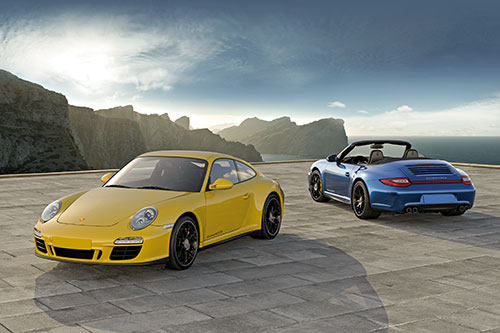 The Porsche 911 997 We Would Buy
The Porsche 911 997 We Would Buy
The 997.2 is a reasonable choice for practical everyday Porsche motoring, although a shorter ride to the office during the summer months is also practical for the older 997.1 To be fair, the early 997 is more of a weekend joy ride car than a pleasant commute to the office. Later cars improved on that and the 997.2 versions after 2009 make every day use more of a practical reality.
The most desirable cars are the GTS and Targa model 09 -12 production with the MA1 engine and PDK transmission. These cars top the HP range of the normally aspirated 997 Carrera models and are a little more refined than the original versions. These are harder to find and command a premium price as does the incredible Turbo S model. The GT3 model is rare, very raw Porsche, big money, and has typically been well used for track days – which is by design.
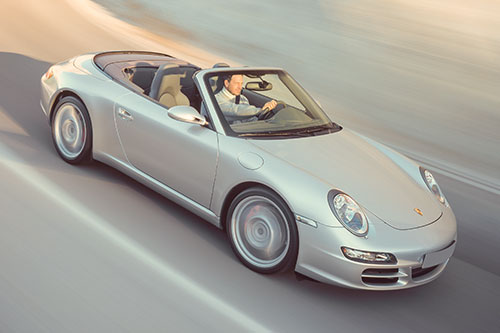 Early 911 997 Practical Choice
Early 911 997 Practical Choice
The original 997 is still making good money and shows potential for gaining value. Finding a lower mileage car with good service history is probably the best option. Problems with the 997 are few and so well known, that a bargain car with higher mileage could still be a worthwhile investment. You must spend a little money straightening the known issues and take more of a risk on the early M97 engine, but the reward could be an appreciating modern classic.
Early 997 Carrera versions are raw Porsche – with a little tlc, paint correction, maybe some upgrades such as wheels and exhaust, you have an awesome 911 Porsche for reasonable money. We think they make for an excellent lower cost, and trouble free way to jump into the Porsche 911 world. The ultimate buy is a 997.2 Turbo S – good luck finding one!
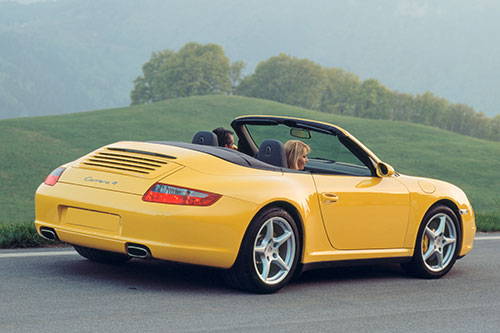 Manual vs. Automatic Transmission
Manual vs. Automatic Transmission
We don’t like the early automatic transmission 997 911! The early auto version is dated and not worth the money being asked – just saying! It is still a practical smooth drive but just not the sporty feel we want – we prefer the manual transmission versions. The later PDK version is very different and in many ways better than a manual car – you should drive both version if possible before you decide.
- Best bargain – 06 low mileage 997.1 Carrera manual transmission
- Best long-term value – 08 low mileage S Model 6-speed manual trans
- Best driver – 2012 low mileage Turbo S
- Best HPDE – 08 GT3 RS
- Collector – GT2
Feel free to reach out to us if you have questions regarding purchasing a 997.




